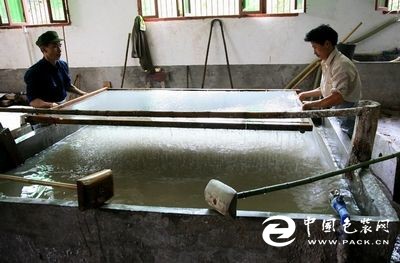
[Chinese Packaging Network News] Little friends all know that papermaking is one of the four great inventions in ancient China, but do you know why plants can be used to make paper? What are the plants that can be used for papermaking? Let's find out together!
What makes paper? In fact, the principle of papermaking is actually very simple. It is the use of the intertwining and intertwining effect of fibers to gather pulpy plant materials into thin slices.
Plant fibers are a type of thick-walled tissue cells that are very special and important on the plant body. They are generally narrow strips, and have two pointed tips. Most of them are dead cells. They have the function of mechanically supporting plant growth, making the plant body resistant to stress and strain. , bending resistance, stems erect, branches and leaves flat and so on. "Thick-walled tissue" means that the cell wall of such cells is significantly thickened, sometimes thick enough to leave only one gap in the cell cavity. They are widely present in various parts of various mature plants and always gather together to form what we commonly call "fiber bundles."
The so-called "unity is power", single fiber cells are insignificant, but after tightly integrated into vascular bundles, the resistance to tearing is greatly enhanced, and the elasticity is even higher. This unique cell "personality" is the cornerstone of human invented paper. When bamboo pulp is used to pick up pulp, and countless fiber bundles are intertwined and tangled irregularly, there will be a preliminary appearance of the paper—paper film.
Papermaking with bamboo
One of the most commonly used plant materials for papermaking in the Ming Dynasty was bamboo. Bamboo is the collective name for the bamboo subfamily of the next grade. Gramineae is a super-family in the plant community and has the closest relationship with humans. We are exposed to members of the Sakamoto family almost every day, such as wheat, rice, corn, and sorghum...
At present, there are approximately 88 genera and 1400 species of bamboo subfamilies distributed in Asia, the Americas, the Pacific Islands, northern Australia, and Africa. Madagascar, Central America, and North America are predominant. There are no wild bamboo species other than cultivated in Europe. There are about 34 genera and 530 species of bamboo in China. They are naturally distributed in the Yangtze River basin and its areas south of the Yangtze River. A few species can extend northward to the Qinling, Hanshui and Yellow River basins.
In fact, if we expand the definition of "paper," then the Chinese use bamboo as a carrier for writing texts much earlier than the Tang dynasty that began to flourish. In ancient dramas featuring the history of the Spring and Autumn and the Warring States Periods to the Qin and Han dynasties, we often saw ancient people reading and writing characters holding a scroll of bulky stringy bamboo paper. This is Bamboo slips. It is also made of "paper" made of wood chips, called hibiscus. do you know? Bamboo slips and hibiscus are commonly referred to as shabby, which is the carrier most commonly used by the ancients to write.